Research on Electromagnetic Adsorption Technology Based on Composite Shaft Lining Structure
Abstract
1. Introduction
2. Research on Electromagnetic Adsorption Characteristics of Composite Shaft Lining Structure
3. Research on Adsorption Characteristics of Annular Electromagnet Array
3.1. Structure Analysis of Electromagnetic Adsorption Device
3.2. Multi-Layer Matrix Simulation Point Modeling
3.3. Analysis of Adsorption Characteristics in Motionless
3.4. Movement Simulation Analysis in Walking Process
4. Structural Optimization Design Based on Genetic Algorithm
4.1. Elitist Non-Dominated Sorting Genetic Algorithm (NSGA-II)
4.2. Optimized Design of Multi-Target Electromagnet Structure
4.2.1. Establish a Vector of Genetic Parameters
4.2.2. Construct the Optimization Objective Function
4.2.3. Design Algorithm Constraints
4.2.4. Construct the Fitness Function
4.3. Analysis of Simulation Results of Electromagnetic Array Unit
5. Conclusions
- The ratio of reinforcement bars on the inner shaft lining should be adjusted according to the size and direction of the stress. The reinforcement bar model is in the range 20–32, and the reinforcement bar spacing is between 150 and 300 mm; in reinforced materials, iron accounts for 97.26%, with a relative permeability between 7000 and 10,000, generating strong magnetic conductivity. Under the premise of effective adsorption, it can produce a strong electromagnetic attraction force with the electromagnetic units in the electromagnetic array, thereby offsetting the gravity of the wall-climbing robot. In concrete materials, iron accounts for 2% to 5%; its relative permeability is similar to that of air, and thus, the magnetic conductivity is relatively weak. However, the magnetic field strength and distribution direction of the magnetic flux in the spacing will not be affected.
- During the longitudinal or horizontal movements of the wall-climbing robot, the number of effective mapping points formed is relatively stable, and the distribution is fairly regular. In the statistics of the electromagnetic array extension grid matrix walking 100 steps obliquely bisecting the line, the number ratio of the four-point and eight-point effective mappings formed within the 30 cm frame is 93:7. The number ratio of the four-point and eight-point effective mappings formed within the 20 cm frame is 56:44. It is verified that the electromagnetic array has a better adsorption effect at a deeper shaft depth. The 20 cm frame is mostly used when the mine shaft is relatively deep. The anisotropic stress on the mine shaft lining at this depth is large. Therefore, the diameter of the reinforcement bars selected is larger, and their arrangement is relatively dense. According to the simulation experiment results, when the mine shaft is deeper, the electromagnetic array shows a better adsorption effect.
- During multi-angle oblique walking, the electromagnetic adsorption efficiency decreases with the increase of the offset angle. If less than 10°, the electromagnetic failure effect is not prominent. If greater than 10°, the electromagnetic failure effect is significantly accelerated until the electromagnetic adsorption function is completely lost. The consistency of the forward direction of the electromagnetic array and the extension direction of the reinforcement bar are significant factors affecting the effective adsorption. Consequently, when the wall-climbing robot walks on the lining of the shaft, it is recommended to choose longitudinal or horizontal walking as much as possible to avoid oblique movement, which is beneficial to maintaining the stability of the electromagnetic adsorption force. In cases of obstacles in front of the movement route, it is essential to predict and calculate the path in advance, adjust the steering angle around 10° at a time, and reserve the straight distance required for obstacle avoidance.
- During the iterative calculation process, the numerical distribution of the genetic parameters of the optimal individual structure of each generation is relatively concentrated; merely sporadic data abnormalities occur, and they are all within the limit range of the genetic data. The number of turns, structural parameter values, and power loss values in the individual parameter vector of the optimal design are all included in the data set interval of each analysis curve. The operation process of the algorithm is well controlled, and the calculation results meet the design requirements. The electromagnetic unit and electromagnetic array generated according to the optimal individual parameters can provide an effective electromagnetic adsorption force for the wall-climbing robot.
Author Contributions
Funding
Institutional Review Board Statement
Informed Consent Statement
Data Availability Statement
Conflicts of Interest
References
- Qiao, L. The cause of the damage of the vertical well shaft and the design of the repair plan. Coal Eng. 2022, 54, 6–11. [Google Scholar]
- Du, C.; Wang, X.; Pan, Y.; Yin, X. A novel evaluation model of shaft stability based on combination weighting method and PROMETHEE II decision-making algorithm. Arab. J. Geosci. 2022, 15, 682. [Google Scholar] [CrossRef]
- Fu, C.; Xiang, L.; Shao, Q. Online monitoring system and engineering application of additional strain on deep topsoil shaft lining. Shandong Coal Sci. Technol. 2022, 40, 191–197. [Google Scholar]
- Xue, W.; Yao, Z.; Song, H. Safety monitoring and analysis of coal mine shafts constructed by thick clay layer freezing method. China Saf. Sci. J. 2016, 26, 137–143. [Google Scholar] [CrossRef]
- Wang, X.; Cai, H. Design and application of safety monitoring system for new well shafts in coal mines. Ind. Mine Autom. 2010, 36, 14–16. [Google Scholar]
- Yang, W. Research on Safety Inspection of Shaft Based on Inertial and Three-Dimensional Laser Technology. Master’s Thesis, Shandong University of Science and Technology, Qingdao, China, 2020. [Google Scholar] [CrossRef]
- Fang, H. Design and Deformation Monitoring and Data Processing of Well Shaft Protection Coal Column Mining. Master’s Thesis, Shandong University of Science and Technology, Qingdao, China, 2011. [Google Scholar]
- Wang, T.; Jin, F.; Du, Z. Three-dimensional deformation monitoring method of mine well shaft. Mine Surv. 1999, 4–6, 27. [Google Scholar]
- Zhao, K.; Liu, L.; Du, S. Application of fiber grating sensing technology in borehole deformation monitoring. Shaanxi Coal 2021, 40, 128–132. [Google Scholar]
- Liu, H. Research on the Deformation Monitoring and Early Warning Method and System of Vertical Well Shaft Based on Fiber Grating Technolog. Master’s Thesis, Beijing Jiaotong University, Beijing, China, 2014. [Google Scholar]
- Song, X. Treatment technology of well wall rupture in Hengyuan Coal Mine. Coal Sci. Technol. Mag. 2013, 135, 69–70. [Google Scholar] [CrossRef]
- Yao, Z.; Zhang, P.; Cheng, H.; Xue, W.; Li, X. Testing of a Dual-Steel-Plate-Confined High-Performance Concrete Composite Shaft Lining Structure and Its Application. Appl. Sci. 2020, 10, 2938. [Google Scholar] [CrossRef]
- Jin, D. Research on the Vertical Bearing Capacity of the High-Strength Reinforced Concrete Shaft Lining of the Frozen Shaft. Master’s Thesis, Anhui University of Science and Technology, Huainan, China, 2018. [Google Scholar]
- Zhao, K.; Chen, X. Electromagnetism; Higher Education Press: Beijing, China, 2018. [Google Scholar]
- Peng, X.; Wu, F.; Liu, F. Civil Engineering Materials; Chongqing University Press: Chongqing, China, 2021. [Google Scholar]
- Karadeniz, K.E.; Nowak, S.; Guner, D.; Sherizadeh, T. Dynamic Response Analysis of a Reinforced Concrete Structure in Underground Coal Mine Environment with Various Strata Conditions. Min. Metall. Explor. 2023, 40, 563–581. [Google Scholar] [CrossRef]
- Guo, D.; Si, G.; Tang, B.; Wang, J. Optimization and simulation of mining electromagnets based on Ansys-Maxwell. Mach. Build. Autom. 2022, 51, 123–126. [Google Scholar] [CrossRef]
- Kashyap, K.; Gehlot, D.; Jain, P. Experimental Analysis of Process Parameters in Electro-Chemical Spark Machining and Optimization using NSGA-II. Iran. Endod. J. 2020, 13. [Google Scholar] [CrossRef]
- Chen, Z.; Chen, L.; Bai, Z.; Yang, Q.; Zhao, F. Interactive multi-attribute decision-making NSGA-II algorithm for solving constrained multi-objective interval optimization. Control Decis. 2015, 30, 865–870. [Google Scholar] [CrossRef]
- Guan, W.; Wang, Y. A community discovery algorithm based on non-dominant sorting genetic algorithm. J. Xinyang Agric. For. Univ. 2020, 30, 104–108, 112. [Google Scholar] [CrossRef]
- Cao, Q.; Zhang, Z.; Chen, Z.; Ma, H.; Yu, T. Research on multi-objective optimization method of radiation shielding based on non-dominant sorting genetic algorithm. Nucl. Power Eng. 2020, 41, 167–171. [Google Scholar] [CrossRef]
- Liu, R.; Bai, J.; Qiu, Y. Research and application of parallel sorting method based on non-dominant sorting. J. Beijing Univ. Aeronaut. Astronaut. 2023, 1–19. [Google Scholar] [CrossRef]
- Premkumar, M.; Jangir, P.; Sowmya, R.; Alhelou, H.H.; Heidari, A.A.; Chen, H. MOSMA: Multi-Objective Slime Mould Algorithm Based on Elitist Non-Dominated Sorting. IEEE Access 2021, 9, 3229–3248. [Google Scholar] [CrossRef]
- Lang, Z.; Rózsa, L.; Reiczigel, J. Comparison of measures of crowding, group size, and diversity. Ecosphere 2017, 8, e01897. [Google Scholar] [CrossRef]
- Zhang, T.; Chen, Z.; Lu, Y. The particle swarm algorithm based on elite strategy is used to solve the multi-objective planning problem. J. Qinghai Norm. Univ. 2012, 28, 5–7. [Google Scholar] [CrossRef]
- Zhao, N.; Shen, Y. Multi-objective simulated annealing algorithm based on elite strategy. J. Wuhan Univ. Sci. Technol. 2008, 100, 13–17. [Google Scholar]
- Cruz, R.A.J.; Diniz, C.I. Mean Convergence Time of Inhomogeneous Genetic Algorithm with Elitism. Numer. Funct. Anal. Optim. 2016, 37, 966–974. [Google Scholar] [CrossRef]
- Deng, X.; Zuo, Y. The qualitative nature of finite rationality and parameter vector optimization problems. J. Sichuan Norm. Univ. 2015, 38, 656–661. [Google Scholar]
- Meng, X.; Guo, L.; Liu, G. Parameter vector Ky Fan inequality and Duality problem Demapping Lipschitz continuity optimal condition. J. Nanchang Univ. 2023, 47, 16–20. [Google Scholar] [CrossRef]
- Kai, S.; Yuan, L.; Gengdong, C. Sensitivity analysis of discrete variable topology optimization. Struct. Multidiscip. Optim. 2022, 65, 216. [Google Scholar]
- Hu, Q.; Li, X.; Liang, Y. Research on the topology optimization method of discrete variables based on isometric analysis. J. Dalian Univ. Technol. 2022, 62, 221–227. [Google Scholar]
- Pevey, J.; Chvála, O.; Davis, S.; Sobes, V.; Hines, J.W. Genetic Algorithm Design of a Coupled Fast and Thermal Subcritical Assembly. Nucl. Technol. 2020, 206, 609–619. [Google Scholar] [CrossRef]
- Jalota, H.; Thakur, M. Genetic algorithm designed for solving portfolio optimization problems subjected to cardinality constraint. Int. J. Syst. Assur. Eng. Manag. 2018, 9, 294–305. [Google Scholar] [CrossRef]
- Chen, G.; Deng, Y. Several new methods for constructing fitness functions in feature selection of genetic algorithms and their applications. Mech. Sci. Technol. Aerosp. Eng. 2011, 30, 124–128+132. [Google Scholar] [CrossRef]
- Wu, Y.; Lu, E.; Deng, Y.; Qin, B. Verification and application of fitness function model in distribution estimation algorithm. Math. Pract. Theory 2008, 38, 98–104. [Google Scholar]
- Akay, Ö.; Tekeli, E.; Yüksel, G. Genetic Algorithm with New Fitness Function for Clustering. Iran. J. Sci. Technol. Trans. A Sci. 2020, 44, 865–874, (prepublish). [Google Scholar] [CrossRef]
- Saakian, D.B.; Hao, K.C. Solution of the Crow-Kimura model with a periodically changing (two-season) fitness function. Phys. Rev. E 2019, 100, 022403. [Google Scholar] [CrossRef]
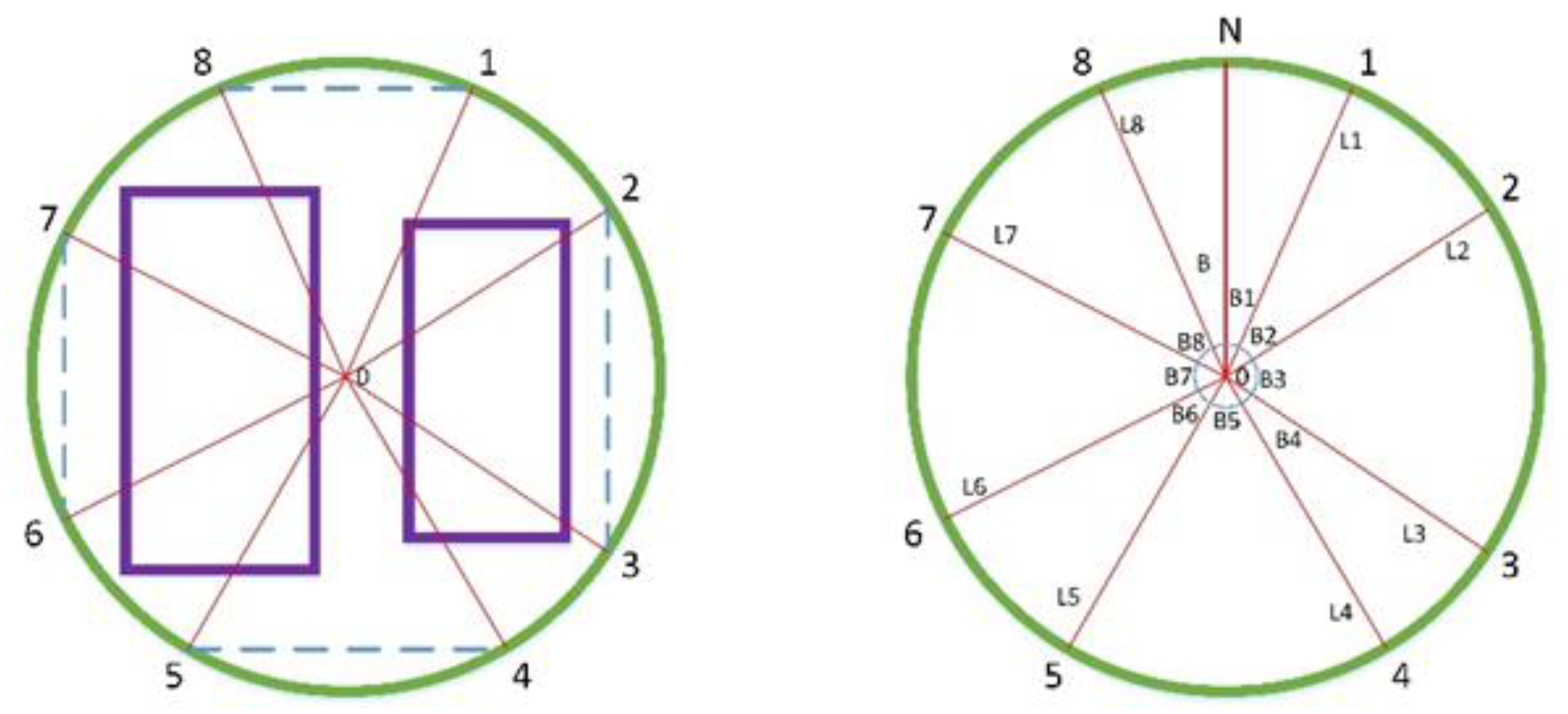

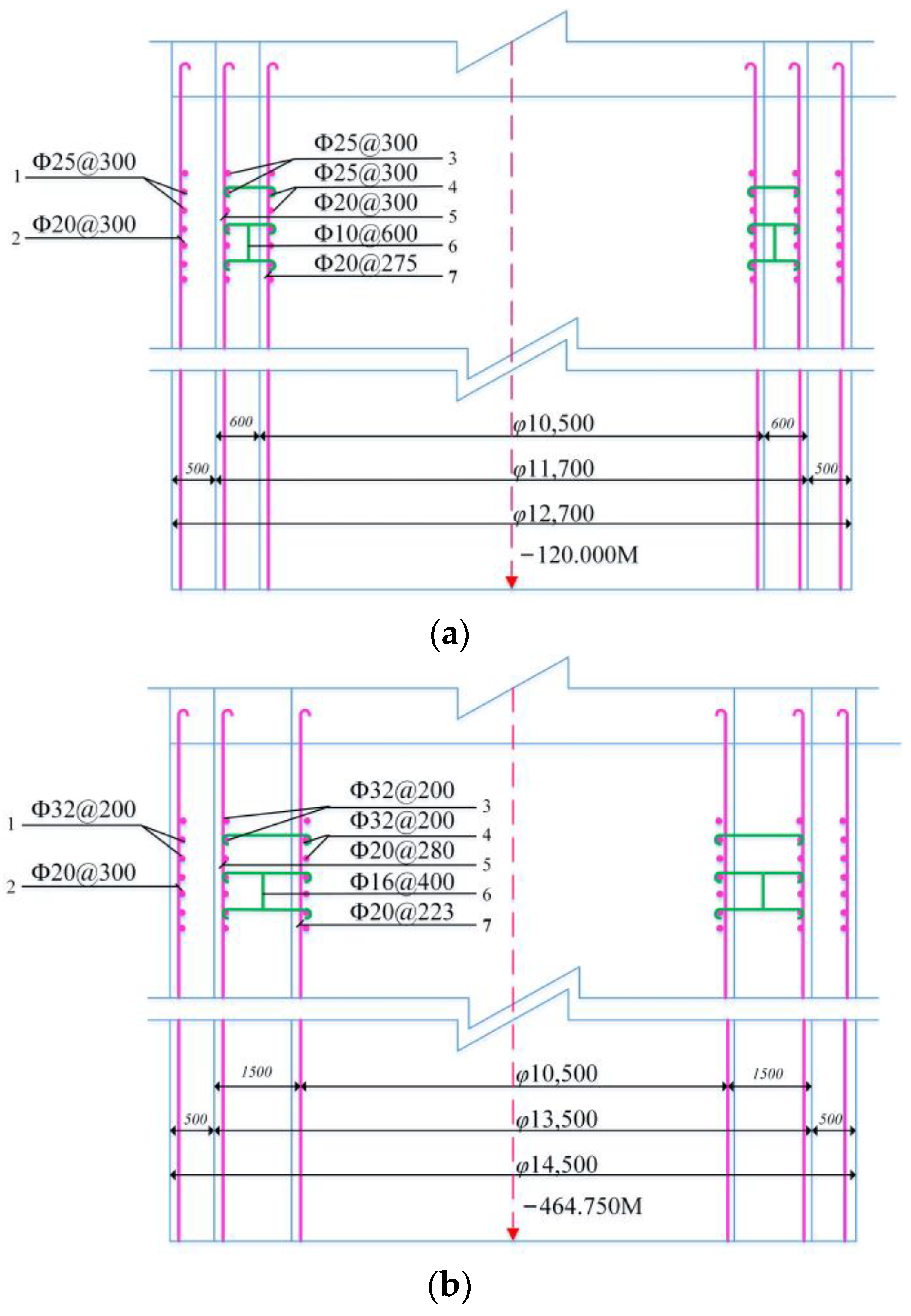
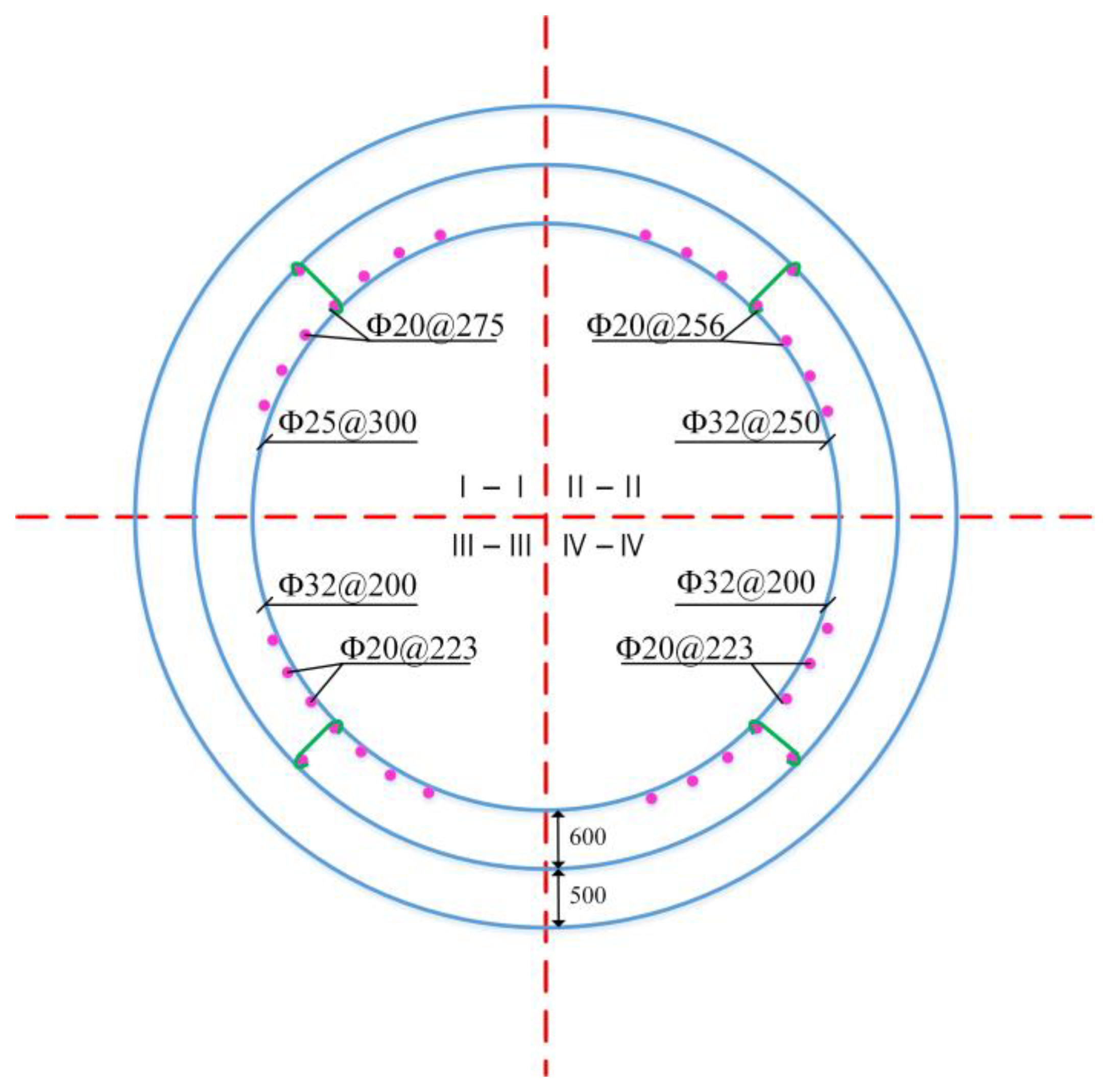
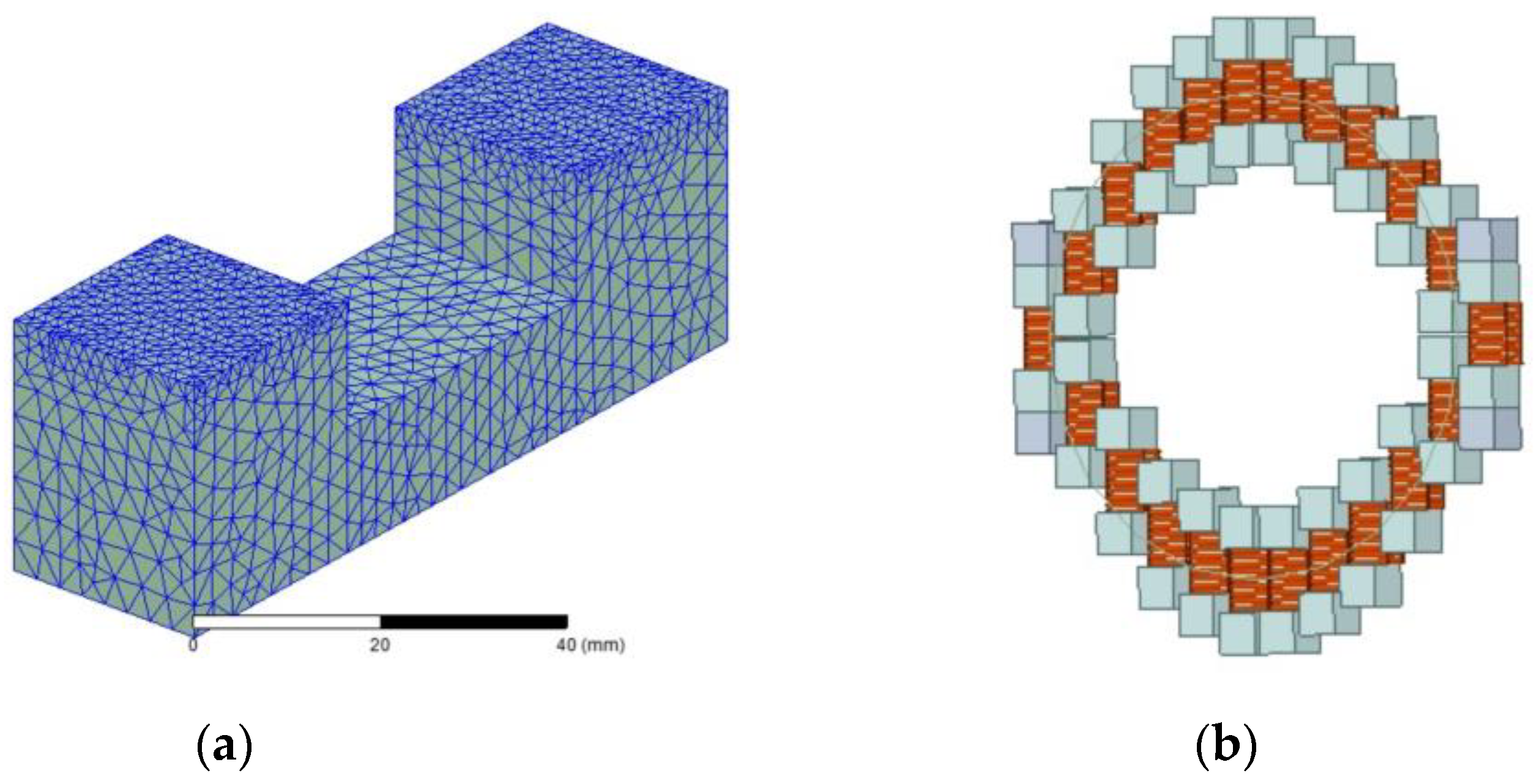
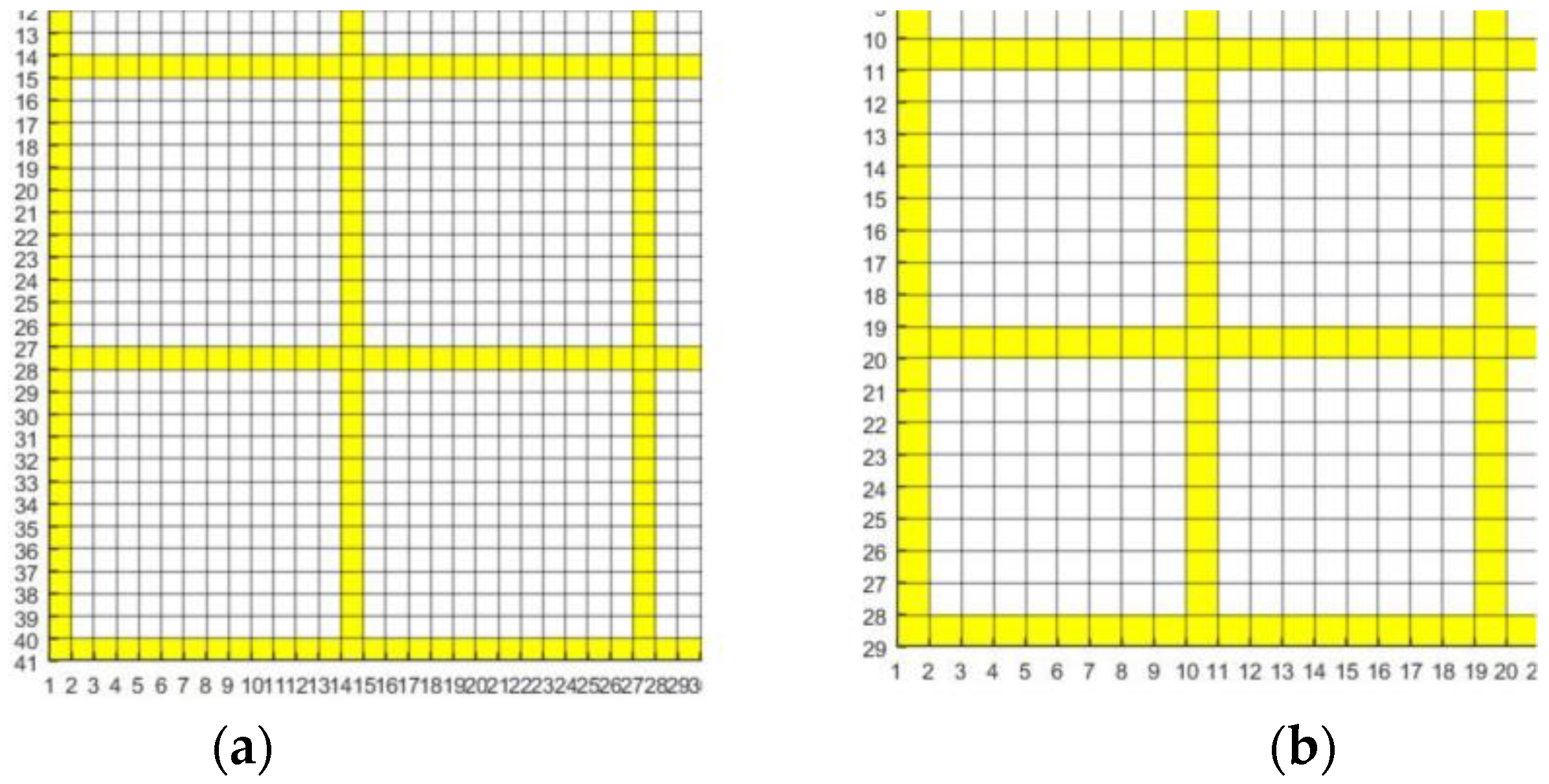
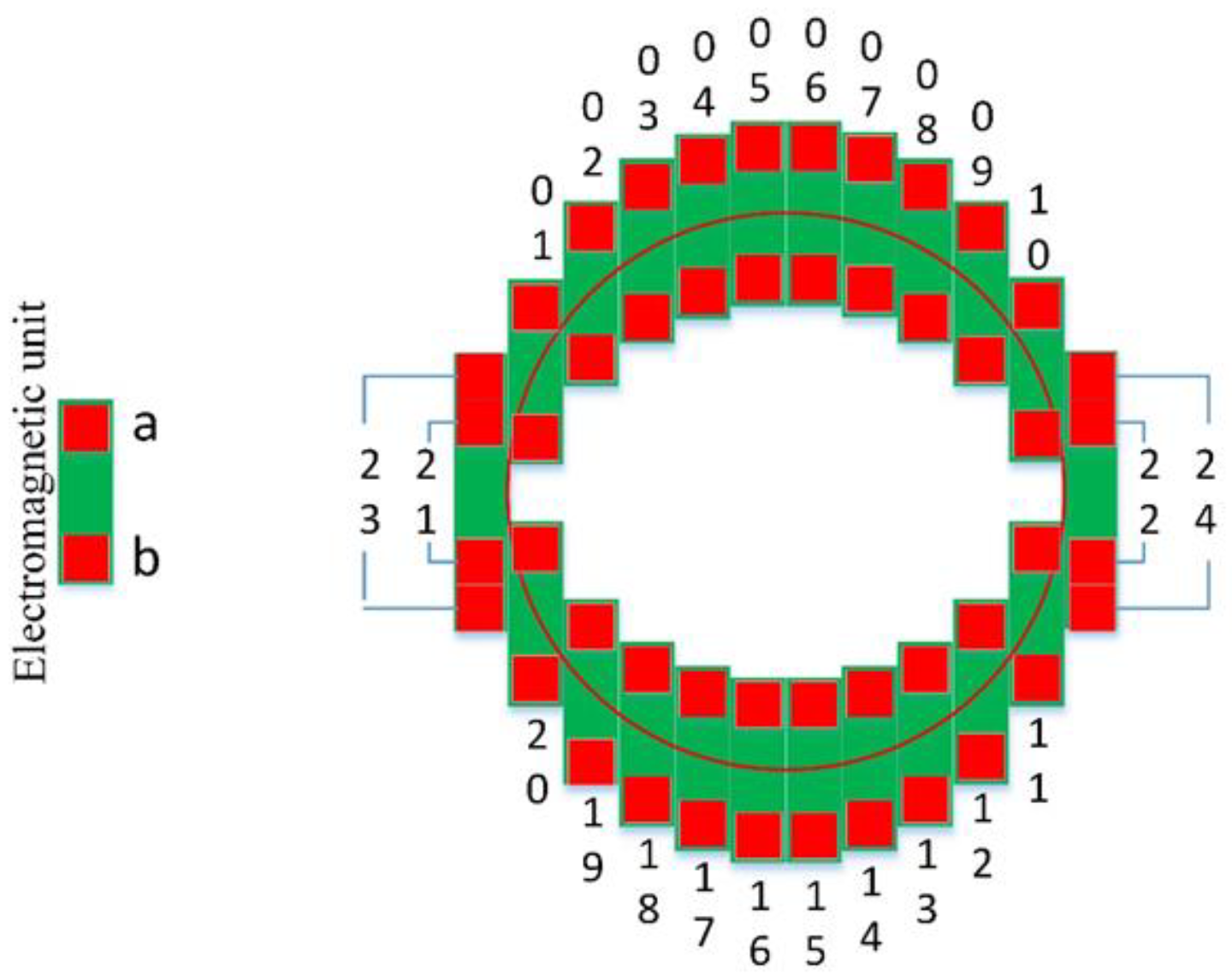


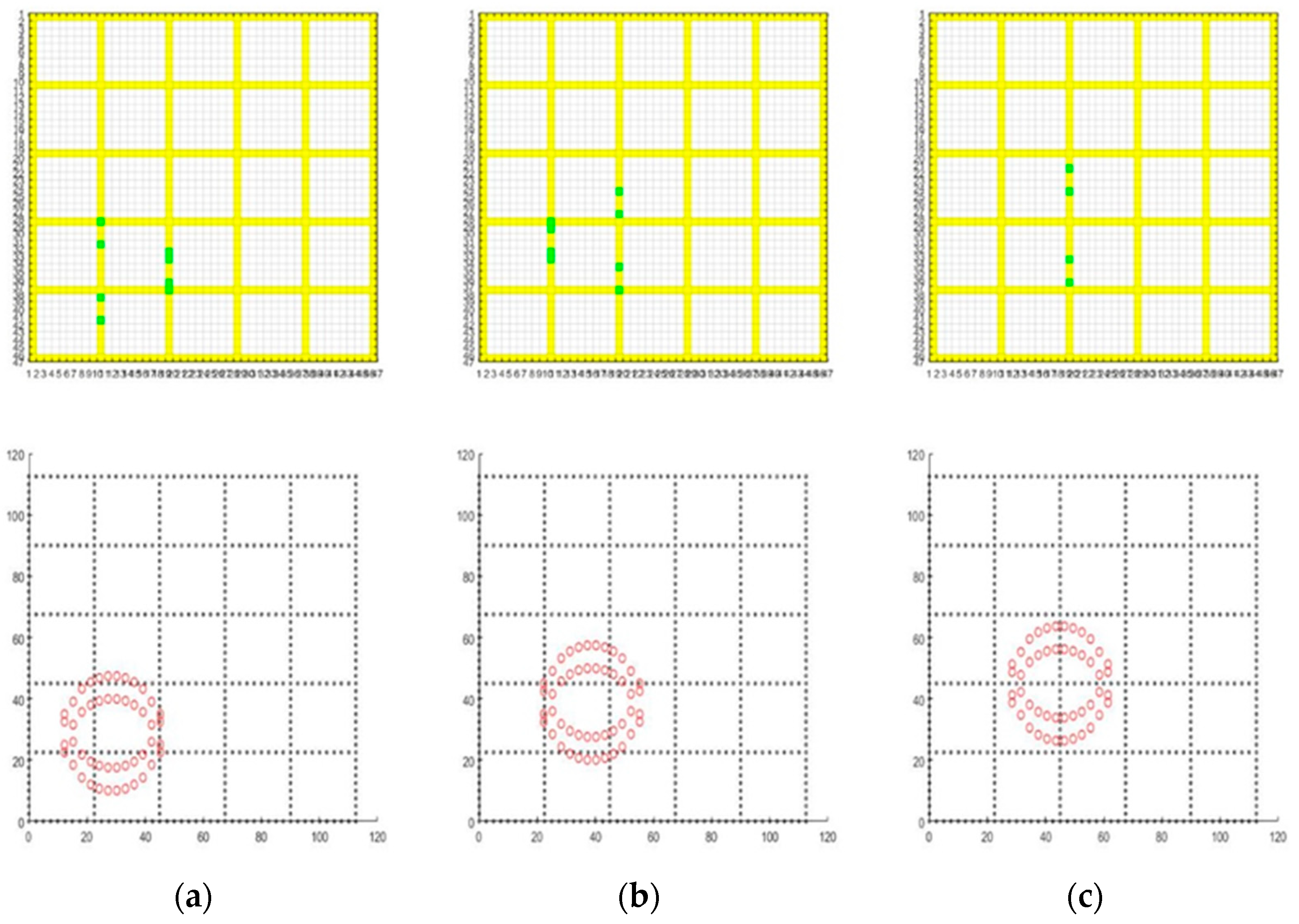
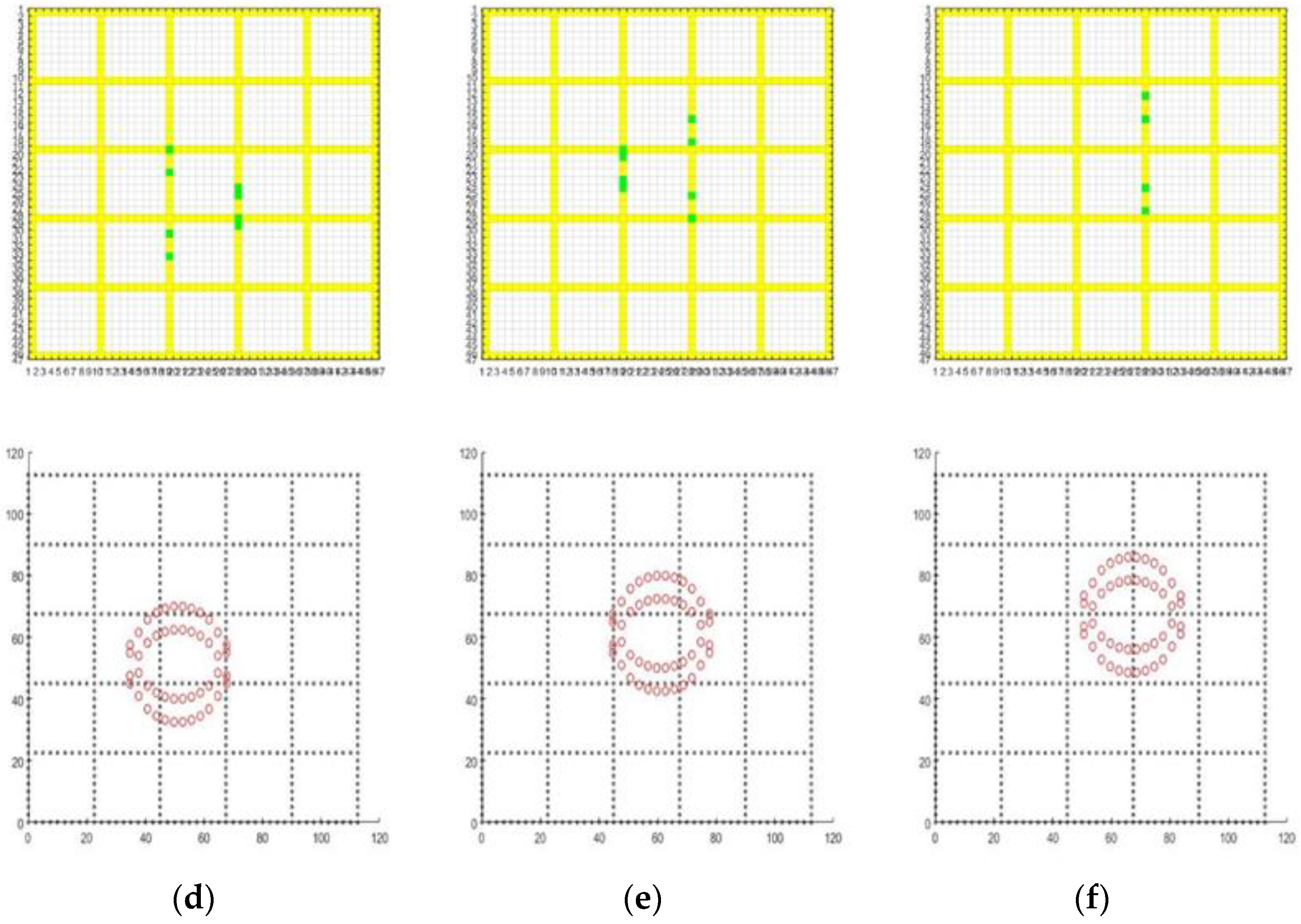
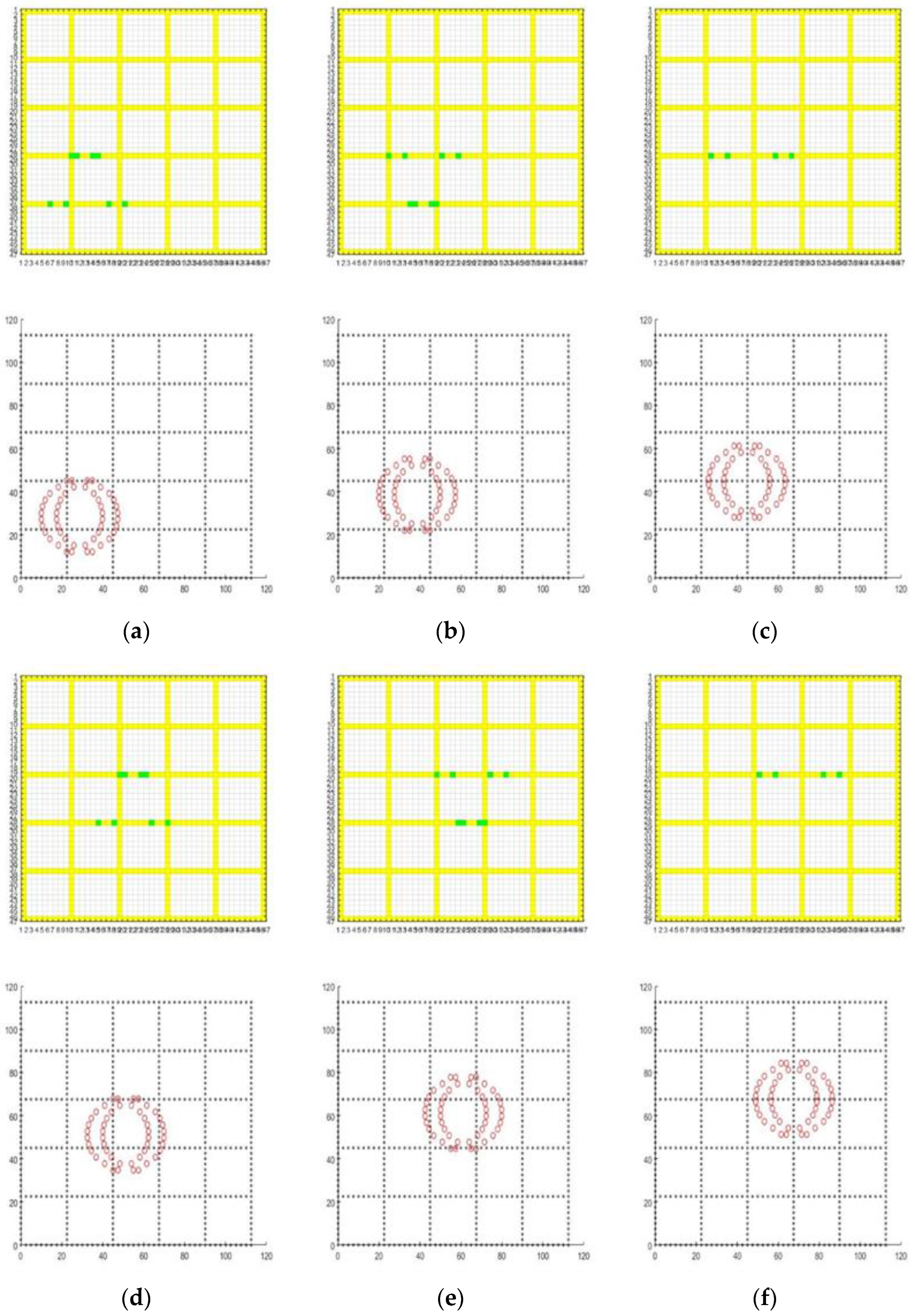
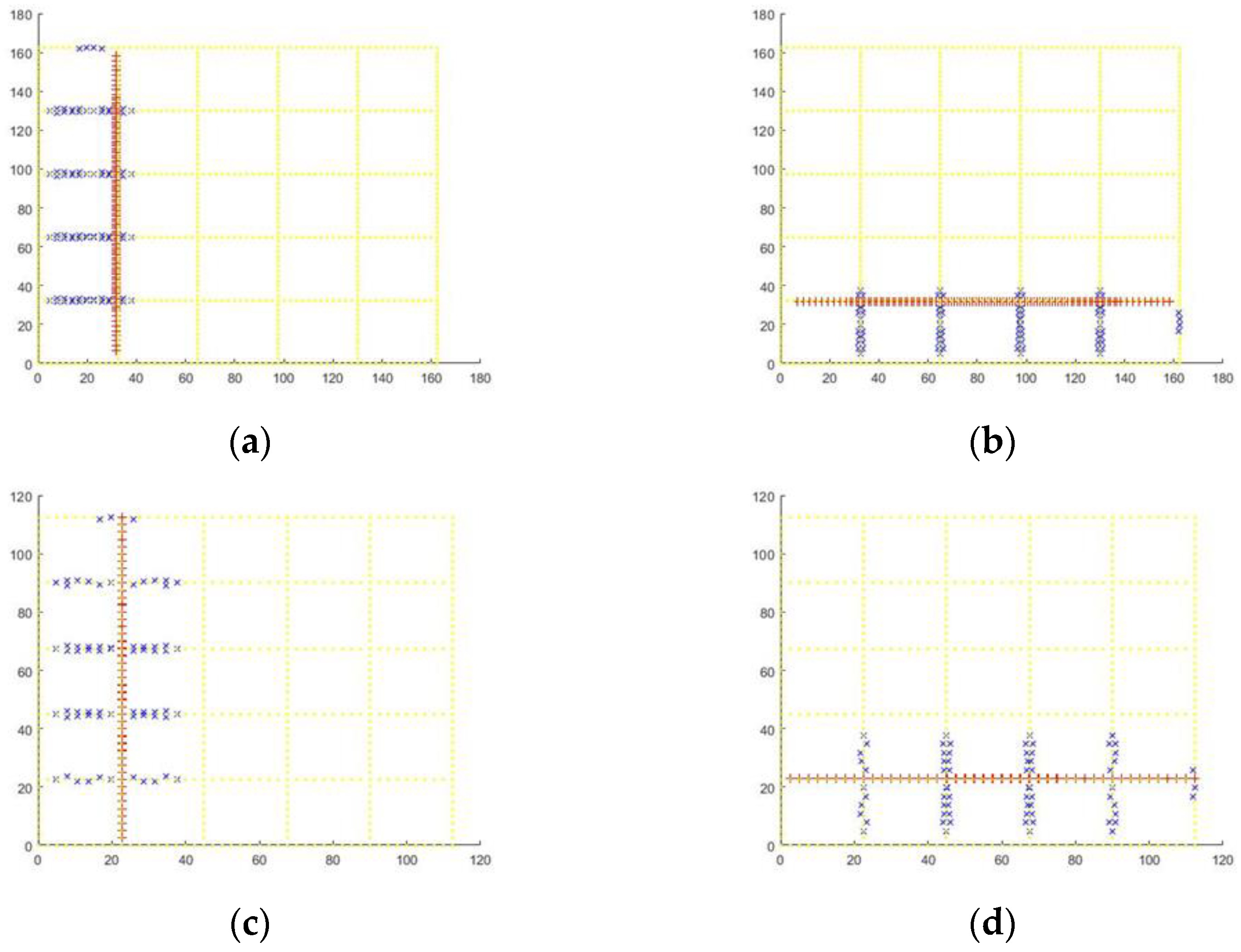
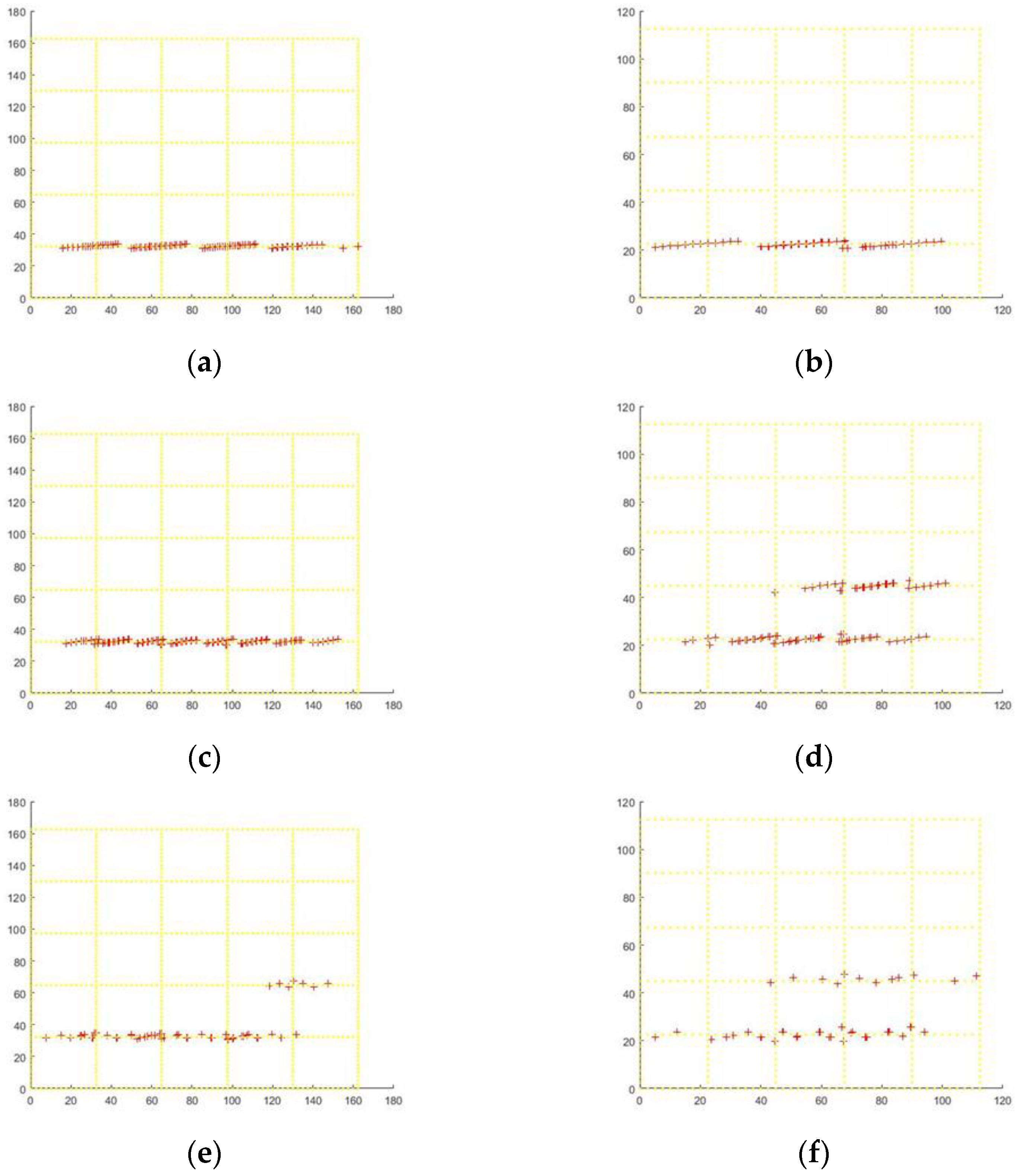
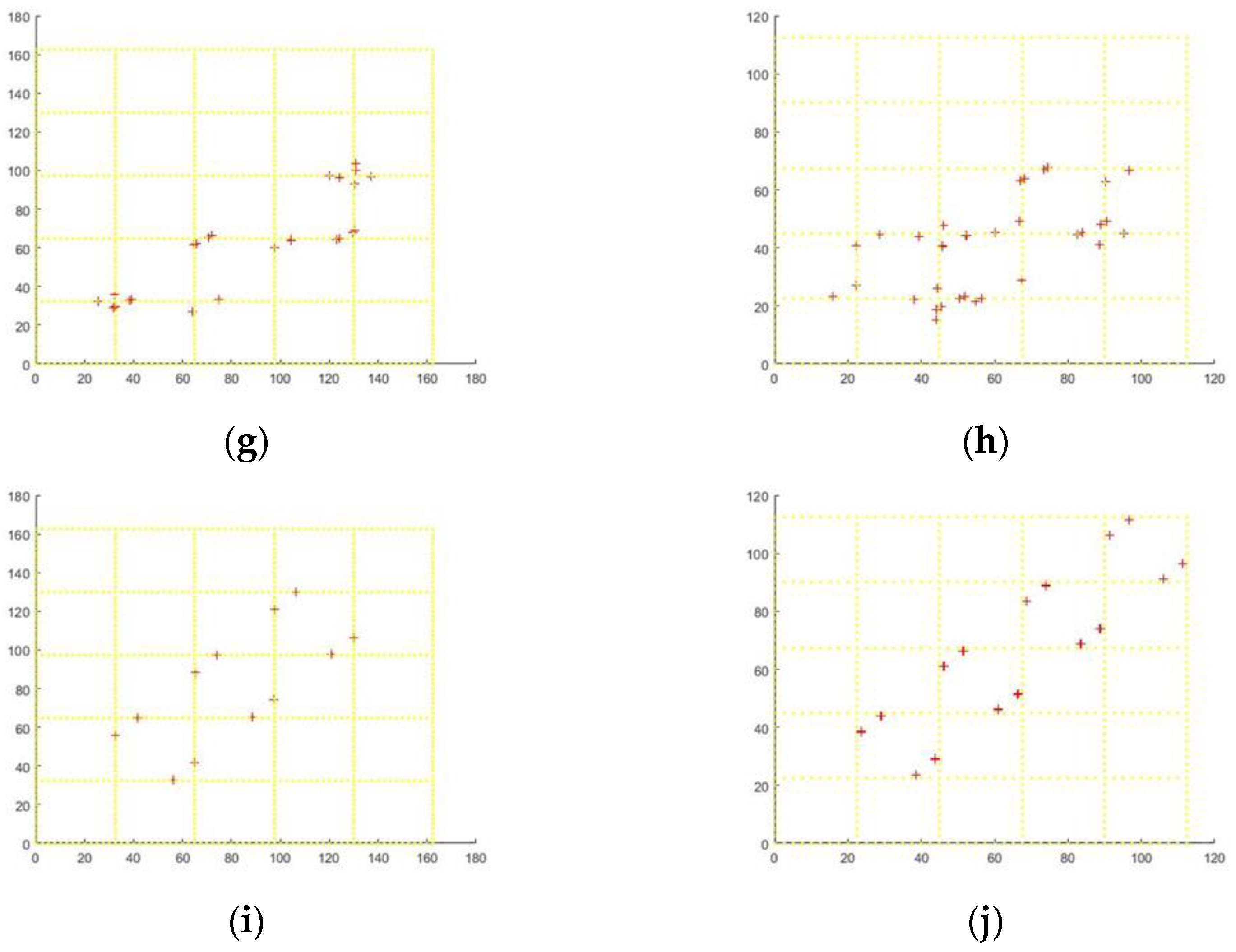
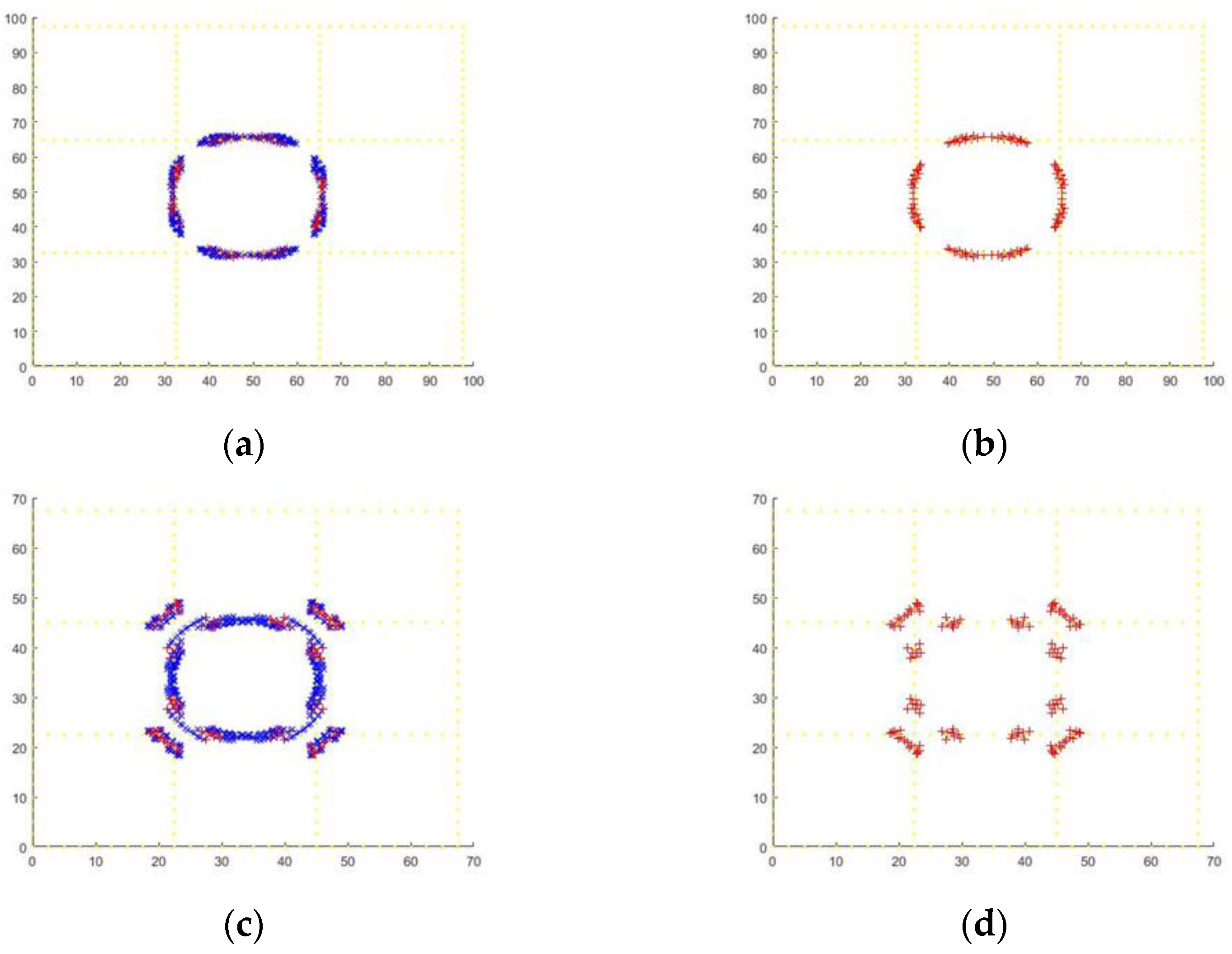
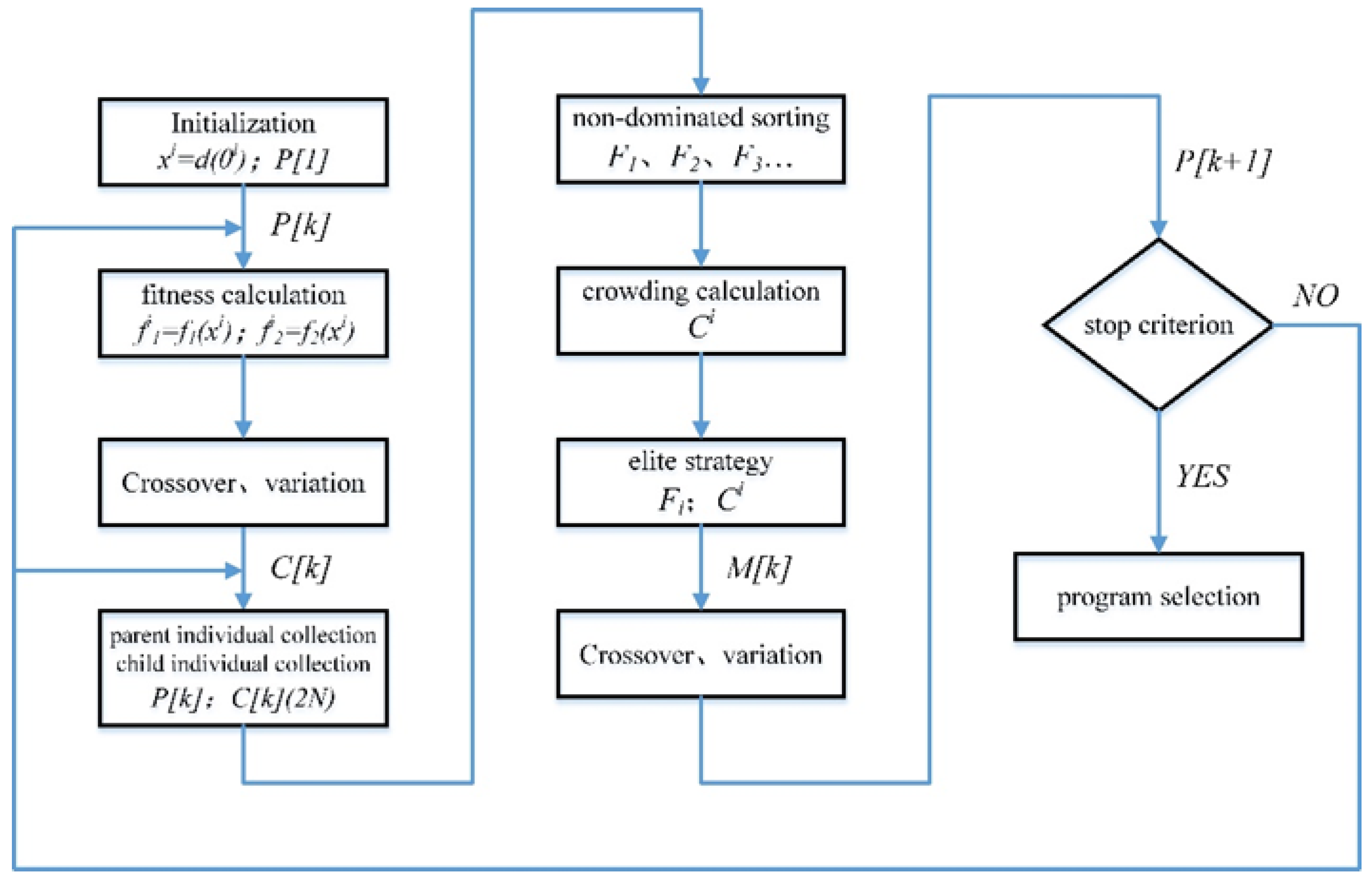
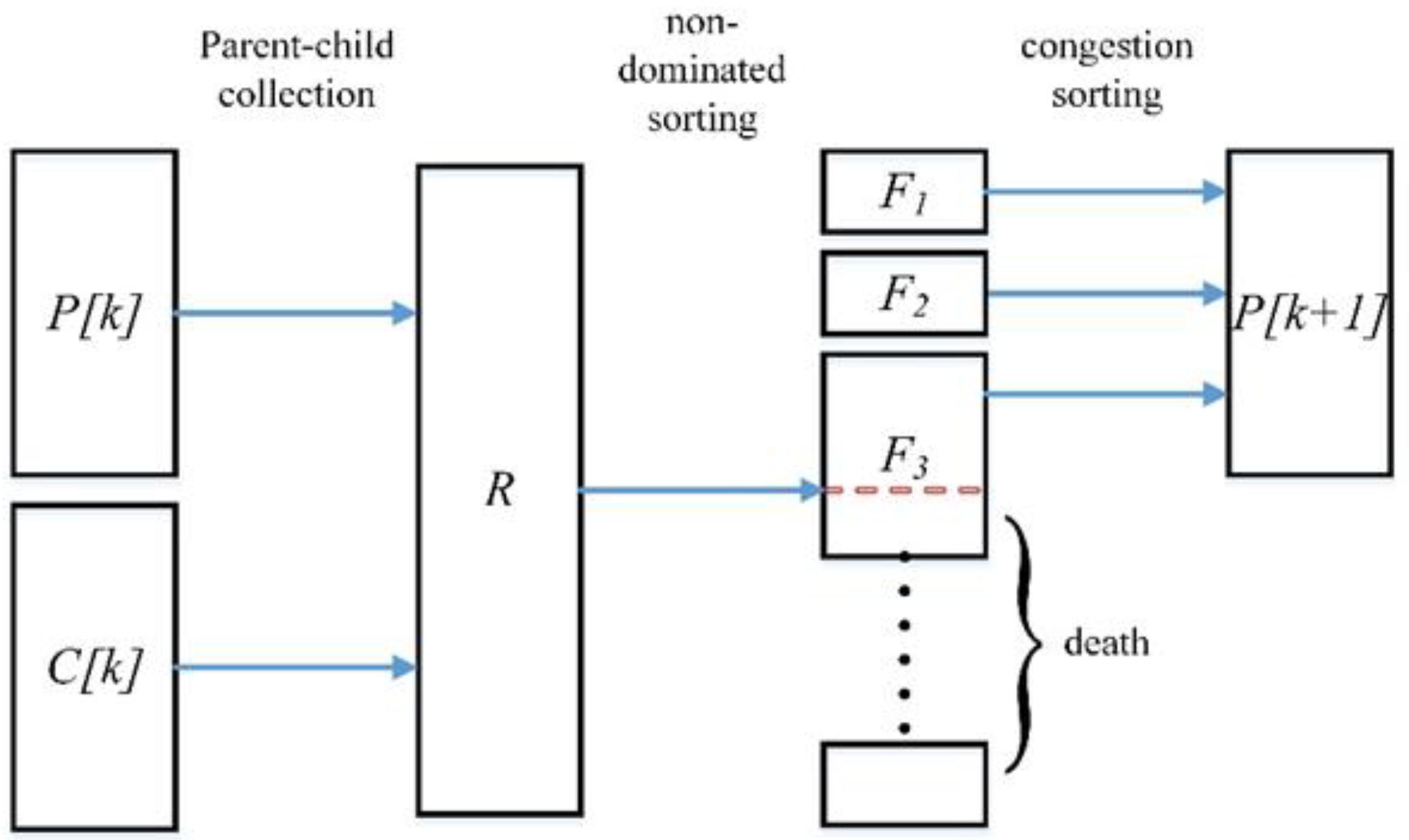
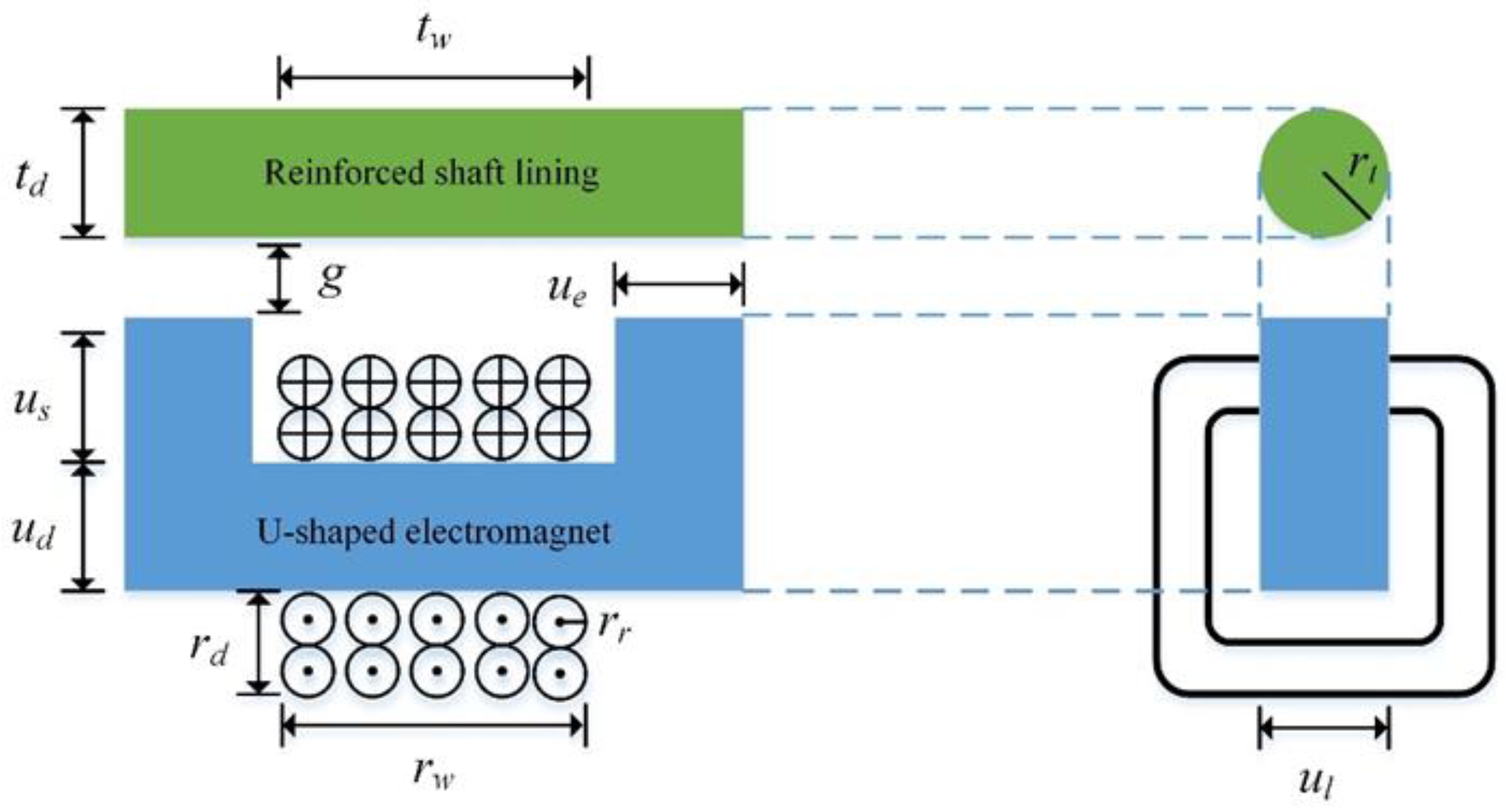


| Shaft Depth (m) | Minimum Diameter of Reinforcement Bars (mm) | Maximum Spacing of Reinforcement Bars (mm) | Minimum Spacing of Reinforcement Bars (mm) |
|---|---|---|---|
| 100 | 16 | 300 | 200 |
| 200 | 18 | 250 | 200 |
| >300 | 20 | 200 | 150 |
| Ferromagnetic Materials | Differential Permeability |
|---|---|
| Cobalt | 174 |
| Cast iron | 200~400 |
| Nickel | 1120 |
| Mild steel | 2000 |
| Silicon lamination | 7000~10,000 |
| Ni-Fe Alloy | 60,000 |
| Permalloy | 115,000 |
| Oxide | Proportion% |
|---|---|
| CaO | 62~67 |
| SiO2 | 20~24 |
| Al2O3 | 4~7 |
| Fe2O3 | 2~5 |
| SO3 | 1~3 |
| 30 × 30 Spacing | 20 × 20 Spacing | ||||
|---|---|---|---|---|---|
| Abscissa | Ordinate | Abscissa | Ordinate | ||
| Row1 | 1~40 | 1 | Row1 | 1~28 | 1 |
| Row2 | 1~40 | 14 | Row2 | 1~28 | 10 |
| Row3 | 1~40 | 27 | Row3 | 1~28 | 19 |
| Row4 | 1~40 | 40 | Row4 | 1~28 | 28 |
| Column1 | 1 | 1~40 | Column1 | 1 | 1~28 |
| Column2 | 14 | 1~40 | Column2 | 10 | 1~28 |
| Column3 | 27 | 1~40 | Column3 | 19 | 1~28 |
| Column4 | 40 | 1~40 | Column4 | 28 | 1~28 |
| Electromagnetic Unit | Electromagnetic Endpoint | Horizontal Offset (cm) | Longitudinal Offset (cm) |
|---|---|---|---|
| 01 | a | −13.5 | 10.29 |
| b | −13.5 | 2.79 | |
| 02 | a | −10.5 | 14.46 |
| b | −10.5 | 6.96 | |
| 03 | a | −7.5 | 16.74 |
| b | −7.5 | 9.24 | |
| 04 | a | −4.5 | 18.06 |
| b | −4.5 | 10.56 | |
| 05 | a | −1.5 | 18.67 |
| b | −1.5 | 11.17 | |
| 06 | a | 1.5 | 18.67 |
| b | 1.5 | 11.17 | |
| 07 | a | −4.5 | 18.06 |
| b | −4.5 | 10.56 | |
| 08 | a | 7.5 | 16.74 |
| b | 7.5 | 9.24 | |
| 09 | a | 10.5 | 14.46 |
| b | 10.5 | 6.96 | |
| 10 | a | 13.5 | 10.29 |
| b | 13.5 | 2.79 | |
| 11 | a | 13.5 | 2.79 |
| b | 13.5 | 10.29 | |
| 12 | a | 10.5 | −6.96 |
| b | 10.5 | −14.46 | |
| 13 | a | 7.5 | −9.24 |
| b | 7.5 | −16.74 | |
| 14 | a | 4.5 | −10.56 |
| b | 4.5 | −18.06 | |
| 15 | a | 1.5 | −11.17 |
| b | 1.5 | −18.67 | |
| 16 | a | −4.5 | −11.17 |
| b | −4.5 | −18.67 | |
| 17 | a | −4.5 | −10.56 |
| b | −4.5 | −18.06 | |
| 18 | a | −7.5 | −9.24 |
| b | −7.5 | −16.74 | |
| 19 | a | −10.5 | −6.96 |
| b | −10.5 | −14.46 | |
| 20 | a | −13.5 | −2.79 |
| b | −13.5 | −10.29 | |
| 21 | a | −16.5 | 3.75 |
| b | −16.5 | −3.75 | |
| 22 | a | 16.5 | 3.75 |
| b | 16.5 | −3.75 | |
| 23 | a | −16.5 | 6.25 |
| b | −16.5 | −6.25 | |
| 24 | a | 16.5 | 6.25 |
| b | 16.5 | −6.25 |
| Silicon Lamination | M19 | M36 | M43 | M47 | Hiperco50 |
|---|---|---|---|---|---|
| p/(kg/m3) | 7402 | 7018 | 7291 | 7585 | 7845 |
| Bmxa/T | 1.39 | 1.34 | 1.39 | 1.49 | 2.07 |
| ur | 32,686 | 26,673 | 24,892 | 9875 | 43,372 |
| Wire | σ0 (MS/m) | T0/°C | ɑT (1/°C) | P (kg/m3) | K/(W/°Km) | Jm (A/m2) |
|---|---|---|---|---|---|---|
| Copper | 59.6 | 20 | 3.93 × 10−3 | 8890 | 385 | 7.56 × 106 |
| Aluminum | 37.7 | 20 | 3.94 × 10−3 | 2750 | 205 | 6.52 × 106 |
| Structural Data | Wire Data | Index Data |
|---|---|---|
| Core material: Hiperco50 | Wire material: Copper | M = 0.5291 Kg |
| ue = 0.0256 m | rd = 0.0047 m | V = 6.5842 × 10−5 m3 |
| ul = 0.025 m | rw = 0.0373 m | Pd = 47.6681 W |
| tw = 0.0388 m | a = 6.5181 × 10−7 m2 | Rd = 0.4757 Ω |
| us = 0.0152 m | Nd = 5 | Jm = 1.5342 A/mm2 |
| ud = 0.0150 m | Nw = 39 | Φ = 7.7111 × 10−6 Wb |
| Lb = 2.1391 | N = 195 | Fj = 164.0864 N |
Disclaimer/Publisher’s Note: The statements, opinions and data contained in all publications are solely those of the individual author(s) and contributor(s) and not of MDPI and/or the editor(s). MDPI and/or the editor(s) disclaim responsibility for any injury to people or property resulting from any ideas, methods, instructions or products referred to in the content. |
© 2023 by the authors. Licensee MDPI, Basel, Switzerland. This article is an open access article distributed under the terms and conditions of the Creative Commons Attribution (CC BY) license (https://creativecommons.org/licenses/by/4.0/).
Share and Cite
Xu, Y.; Fu, W. Research on Electromagnetic Adsorption Technology Based on Composite Shaft Lining Structure. Processes 2023, 11, 1752. https://doi.org/10.3390/pr11061752
Xu Y, Fu W. Research on Electromagnetic Adsorption Technology Based on Composite Shaft Lining Structure. Processes. 2023; 11(6):1752. https://doi.org/10.3390/pr11061752
Chicago/Turabian StyleXu, Ying, and Wenjun Fu. 2023. "Research on Electromagnetic Adsorption Technology Based on Composite Shaft Lining Structure" Processes 11, no. 6: 1752. https://doi.org/10.3390/pr11061752
APA StyleXu, Y., & Fu, W. (2023). Research on Electromagnetic Adsorption Technology Based on Composite Shaft Lining Structure. Processes, 11(6), 1752. https://doi.org/10.3390/pr11061752





